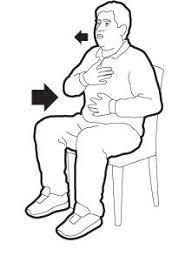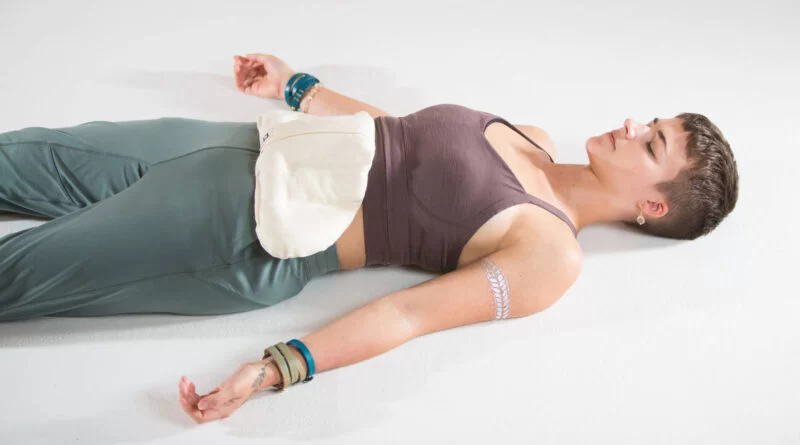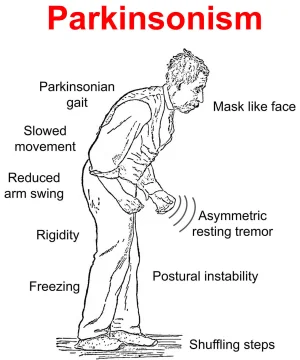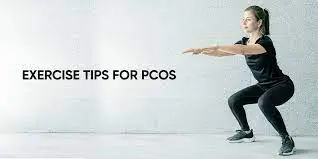Diaphragmatic breathing exercise: Benefits, Types, How to do?
Diaphragmatic breathing exercise is a great exercise to improve your lung function and there are many health benefits associated and also improve your fitness level and stamina of your body.
What is the Diaphragm muscle?
This is a large and dome-shaped muscle situated at the base of the lungs. Diaphragmatic breathing is meant to help you use your diaphragm muscle correctly while breathing.
Diaphragmatic breathing exercise gives you several benefits to your body including maintaining your blood pressure and heart rate and improving relaxation. Your abdominal muscles play an important role during breathing it will help to move the diaphragm and give you more power to empty your lungs.
What is Diaphragmatic breathing?
This breathing technique helps you to use your diaphragm correctly while breathing to:
Helps to Strengthen your diaphragm muscle.
Reduce the work of breathing by slowing your breathing rate.
Reduce oxygen demand.
Use less energy and effort to breathe.
During diaphragmatic breathing, you consciously use your diaphragm to take deep breaths. When you normally breathe, you do not use your lungs to their full capacity. Diaphragmatic breathing allows you to use your lungs at a hundred percent capacity to increase lung efficiency.
What are other names for diaphragmatic breathing?
Abdominal breathing.
Belly breathing.
Which conditions make it harder to use your diaphragm?
Anxiety.
Asthma.
Chronic obstructive pulmonary disease(COPD).
Stress.
Health benefits of Diaphragmatic breathing exercises:
- Helping you relax.
- Improving muscle function during exercises and preventing strain.
- Increasing oxygen demand in your blood.
- This exercise easier for your body to release gas waste from your lungs.
- It is at the center of the practice of meditation, which is known to help manage the symptoms of conditions as wide-ranging as irritable bowel syndrome, depression and anxiety, and sleep apnea.
- It helps you relax, lowering the harmful effects of the stress hormone cortisol on your body.
- Helps to lower your heart rate.
- Helps to lower your blood pressure.
- Helps you cope with the symptoms of post-traumatic stress disorder (PTSD).
- Helps to improve your core muscle stability.
- Helps to improve your body’s ability to tolerate intense exercise.
- Helps to lower the chances of injuring or wearing out your muscles.
- Helps to slow your rate of breathing so that it expends less energy.
- Helps to improve diaphragm movement after paralysis.
- One of the biggest benefits of diaphragmatic breathing is decreased stress.
What happens during Diaphragmatic breathing?
When you breathe in and breathe out, the diaphragm and other respiratory muscles around your lungs are contracted. your diaphragm does most of the work during the breath-in. During breath-in, your diaphragm contracts so that your lungs can expand into the extra space and let in as much air as is needed. Muscles located in between your ribs called intercostal muscles, raise your rib cage to help your diaphragm let enough air into your lungs.
Muscles near your collarbone and neck also help diaphragm muscles when something makes it harder for you to breathe correctly. These all muscles contribute to how quickly and how much your ribs can move and make space for your lungs.
Some of these muscles include:
- Scalenes
- Pectoralis minor
- serratus anterior
- sternocleidomastoid
How do I do Diaphragmatic breathing exercises?
Firstly you have to learn the diaphragmatic breathing technique, it may be easier for you to follow the instructions lying down.
- For this exercise, you have to Lie on your back on a flat surface or in bed, with your knees flexed and your head supported. use one pillow under your knees to support your legs.
- Place your right hand on your upper chest and your left hand just below your rib cage. This will help you to feel your diaphragm move as you breathe.
- Inhale slowly through your nose so that your abdomen comes out, and your hand rises. The hand on your chest should remain as still as possible.
- Tighten your stomach muscles, so that your stomach moves in, causing your hand to lower as you exhale through pursed lips (see “Pursed Lip Breathing Technique”). The hand on your upper chest should remain as it is possible.
Different types of Diaphragmatic breathing exercises.
Diaphragmatic breathing technique (sitting)

When you expert in lying breathing techniques then go for this variation.
- For this exercise, you have to Sit comfortably in a chair, with your knees flexed and your shoulders, head, and neck relaxed.
- Place your right hand on your upper chest and your left hand just below your rib cage. This will allow you to feel your diaphragm move as you inhale.
- Inhale slowly through your nose so that your tummy moves out against your hand. The hand on your chest should remain as still as possible.
- Tighten your abdominal muscles, so that your stomach moves back in, as you exhale through pursed lips. The hand on your upper chest must remain as it is.
Do I need to practice diaphragmatic breathing?
Yes, you have to practice diaphragmatic breathing. You may notice it takes an increased effort to utilize the diaphragm muscle correctly. firstly, you will probably get tired while performing this exercise. But keep it as it is, because with continued practice diaphragmatic breathing will become automatically worked properly.
How often should I practice diaphragmatic breathing exercises?
At first, practice diaphragmatic exercises for seven to ten minutes about 3 to 4 times a day. Gradually increase the amount of time you spend performing this exercise, and perhaps even increase the effort of the exercise by placing a book on your abdomen.
Diaphragmatic breathing instructions
The most basic type of diaphragmatic breathing is done by breathing in through your nose and exhaling through your mouth.
Diaphragm breathing basics
Here is the basic procedure for diaphragmatic breathing. It may be easiest to practice while lying on the ground when you first begin.
- For this exercise, you have to Sit or lie down on a comfortable or flat surface.
- Relax your shoulder muscles, shifting them down away from the ears.
- Place a right hand on your chest and a left hand on your tummy.
- Without straining or pushing, inhale through your nose until you can not take in any more air.
- Feel the air moving through your nostrils into your stomach, expanding your abdomen and sides of the waist. Your chest remains relatively still.
- Purse your lips as if sipping through a straw. breath out slowly through the lips for four seconds and feel the abdomen gently contracting.
- Repeat these steps many times for the best results.
Rib-stretch breathing
This is another helpful deep breathing exercise to help you expand your breath into your lungs. Here is how to do it:
- For this exercise, you have to stand or sit upright.
- Cross your hands over your chest and place your palms on either side of your rib cage.
- Without straining or pushing, breathe in through your nose until you can not take in any more air.
- Feel your ribs expand into your hands as you do so.
- Hold your breath for five to ten seconds.
- Exhale slowly through your mouth. You can perform this normally or with pursed lips.
Numbered breathing
This is an excellent exercise for gaining control over your breathing patterns. Here is how you can do it:
- For this exercise, you have to Sit or stand upright & close your eyes.
- Without straining or pushing, inhale through your nose until you cannot take in any more air.
- breath out until all air has been emptied from your lungs.
- your eyes should be closed, and full breath in again.
- Keep the air in your lungs for 3 to 4 seconds, then let it all out.
- Count that as breath 1.
- breath in full again.
- Hold for 3 seconds, then let it all out.
- Count that as breath 2.
- Repeat a full breath in, hold, and then breathe out.
- Count that as breath 3.
- Repeat these steps until you have reached ten.
- Feel free to count higher if you feel comfortable. For an additional mindfulness component, you can start over again from one, noticing if you accidentally count beyond ten.
Lower-back breathing
- This is also known as kidney breathing. this can help you train yourself to breathe spherically rather than simply in and out.
- Place your palms on your lower back with your thumbs touching the top of your hip joint. place your hands roughly parallel to your kidneys.
- Breathe in slowly through the nose, focusing on “sending” the breath into the hands at the low back.
- You can very slightly contract the belly to emphasize the movement in the lower back.
- You may feel an almost in-detectable movement in your low back, or you may feel no motion at all.
- slowly breathe out through the nose or mouth, allowing the tummy and sides of the waist to naturally contract.
- Inhale again and focus on expanding the lower back into the hands.
- Exhale and release the breath completely.
- Repeat the process for ten cycles.
Note: You can not breathe into your back or belly. You can only breathe in your lungs. This exercise expands your lungs within the body to help stimulate sensation and movement in the lower back.
Box breathing
This is also known as square breathing. This is because each of the 4 steps involves breathing or holding the breath for four seconds, creating four into four effects.
- For this exercise, you have to Sit or stand upright.
- Slowly breath out through your mouth, getting all the oxygen out of your lungs.
- breath in as you count slowly to 4 in your head, fill the air in the lungs completely without strain.
- Hold your breath while counting slowly to four.
- Breath out and release the breath slowly to the count of 4.
- Hold the exhale time for the count of 4.
- Repeat the cycle 7 to 12 times.
4-7-8 breathing
The 4-7-8 breathing technique is based on an ancient yogic technique called pranayama.
- Let your lips part slightly. Make a whooshing sound, and breath out all air completely through your mouth.
- Close your lips and breath in silently through your nose as you count to 4 in your head, fill the air in the lungs completely without strain. Hold your breath for seven seconds. Make another whooshing breath out from your mouth for eight seconds.
- Repeat for 6 to 12 rounds.
Sandbag Breathing

- For this exercise, you have to Lie on your back with a thin cushion supporting the head and neck. place your legs slightly apart and the arms rest along the side of the body, palms turned up.
- The spine is not flexed to either side.
- Establish a flow of relaxed breathing, in 3 steps:
- Feel the air flowing in and out, over and over again.
- Soften the tummy and feel it rise as you breathe in and fall as you breathe out.
- Let the breath flow without taking a rest in between the breaths.
- Once the flow of breath is well established, put a sandbag on the tummy and start a period of weight training.
- You will find that simply placing the weight on the stomach focuses your attention there.
- Exhale and inhale, raising the sandbag as you breathe in, and lowering the sandbag as you breathe out.
- You are not pushing the sandbag up by protruding the tummy.
- The bag rises from the movement of the diaphragm.






17 Comments